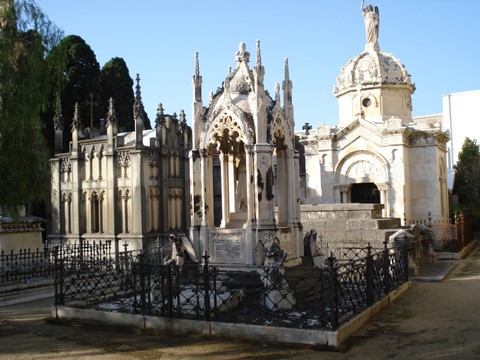Els Caputxins Cemetery
200 years of Mataró history
The Els Caputxins Cemetery is the most significant Neoclassical site in the city and an outdoor museum that, through tombs, pantheons, mausoleums and funeral sculptures, explains 200 years of Mataró’s history. This space is where some of the most outstanding local personalities were laid to rest, including the man behind the Iberian Peninsula’s first railway, Miquel Biada, the architect, politician and historian Josep Puig i Cadafalch, the trade union leader Joan Peiró, the artists Jaume and Jordi Arenas, the archaeologist Marià Ribas, the poet Josep Punsola and the singer Pere Pubill Calaf, known as “Peret”, among many others.

It was built in 1787, when a Royal Decree from Charles III of Spain banned burials in churchyards and ordered the construction of new ventilated cemeteries, far away from urban centres. In 1817, Mataró City Council accepted the proposal from the Order of the Caputxins to create a “Campo Santo”, or cemetery, on the upper part of the convent, for all citizens who wanted to be buried there. Within just three years, it was the site for practically all burials in Mataró.
Over the course of its existence, the Els Caputxins Cemetery and Convent has undergone various fortifications, demolitions and reconstructions. In 1835, there was a fire and the Caputxí friars later left for good. Through an auction in 1844, the Junta d’Obra de Santa Maria organisation acquired the plot, on which the new Catholic cemetery was to be built. In 1944, the right side of the entrance esplanade was expanded to create the Secció Nova, or “New Section”, designed by municipal architect Lluís Gallifa.
Address: Carrer del Molí de Dalt, 4 08304 Mataró
Tel.: (+34) 937 574 767
Opening hours: Monday–Sunday 9am–5:30pm